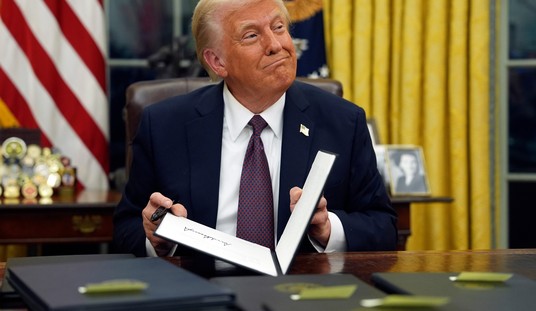I was young, very young, the first time I watched 'The Wizard of Oz.' Even at that tender age, and I couldn't have been more than three or four years old, the movie made an impact on me. Mostly, those beautiful ruby slippers, which I coveted.
I got a pair, sort of, when I was five. That was the year I dressed as Dorothy for Halloween, complete with the blue gingham dress sewn by my mom. My father, God rest him, spent days at his roll-top desk in our basement, using rubber cement to adhere red glitter to an older pair of my shoes (these were the dark ages before glitter shoes were readily available).
But my love for the Emerald City didn't fade much as I grew older. Last winter, I watched Heritage Auctions sell off a pair of those beloved ruby slippers for an eye-watering $28 million ($32.5 million after the auction house's buyer's premium is added in).
I was not the winning bidder.
I confess I haven't seen "Wicked," neither the stage play nor the movie. I do like "Defying Gravity," and it's on my playlist. But that's as far as it goes. Part two of that movie, Wicked: For Good, hits theaters this week. Despite the fact that Dorothy, and the book-accurate silver slippers, make an appearance, I have little interest in seeing it (and I watch a lot of movies).
Recommended
Mostly because I despise Hollywood's attempt to make villains less... villainy and to give them humanizing backstories instead. Sometimes a wicked witch is just a wicked witch.
But I digress.
It was this article from Variety that caught my eye, and however bad you think the headline is, the body of the article is worse than I imagined.
Why Does 'The Wizard of Oz' Still Cast Such a Wicked Spell? Because It's the Movie That First Flipped the Patriarchy on Its Head https://t.co/ztr526FSR2
— Variety (@Variety) November 23, 2025
Here's just a sample:
And here’s the sleight-of-hand trick of it all. The land of Oz doesn’t present itself as a matriarchy. The most powerful figure in the kingdom is a man: the Wonderful Wizard of Oz. Everyone drops his name in awed tones. The regal Glinda defers to him. Even the imperious Wicked Witch is intimidated by his power. So the land of Oz, in form, is a traditional patriarchy.
Except that it’s not. Because what we finally learn is that “the Wizard of Oz” doesn’t exist. That looming patriarchal monarch is an illusion, a hologram glimpsed through smoke and fire. Glinda and the Wicked Witch of the West really are the two most powerful figures in Oz. And as you look more closely at Margaret Hamilton’s extraordinary performance as the Wicked Witch, another level of this phantasmagorical landscape clicks into place, a kind of submerged reverie of identity.
What is it about the Wicked Witch that’s so uniquely scary and mesmerizing? It’s that Hamilton invests her with a look and energy that fuses the masculine and the feminine. The movie is telling us, in a nightmare way, what is going to frighten people about matriarchy: the primal anxiety that women will subsume and replace men. That fear asserts itself in the homicidal gaze of Hamilton’s presence. The Wicked Witch’s dream mission is to murder femininity (“My pretty!”).
But this, in fact, is a perversion of what true matriarchy is. The more enlightened version is the one presented by Dorothy and her three friends: the Scarecrow, the Tin Man, and the Cowardly Lion, all visions of men who have had their power taken away. Yet their love for Dorothy is real; that’s what their power becomes — the desire to transcend their goofball selves by protecting her.
Huh?
In all years of watching The Wizard of Oz (it used to be on television every year around Easter), in all the times I've sung along to "Over the Rainbow," never once did I get a "smash the patriarchy vibe" from, well, any of it.
If we want to go that route, let's point out that one of the leaders is an evil witch hellbent on destroying a young girl, and the other, "good witch," lets that same girl travel into death and danger while holding out the most important piece of info: she has the power to send herself home at any time. That might've been something worth noting before Dorothy was carried off by the flying monkeys, Glinda.
This evil and indifferent incompetence isn't a ringing endorsement of the matriarchy, but I'm sure the author votes for Democrats, so he's used to evil and incompetent governance, I suppose.
It is men — the Scarecrow, the Tin Man, and the Cowardly Lion — who overcome their struggles to help and protect Dorothy. I'm only surprised the author didn't work in a nod to "toxic masculinity" somewhere, because feminists have told me for a while now that men protecting women is incredibly sexist.
Yay, girl power! Or something.
And if there's one thing I dislike more than giving villains sympathetic origins, it's the Left's ceaseless attempt to retcon beloved stories through their preferred political lens. And what's missing from the entire discussion is this: Variety treats The Wizard of Oz like a dissertation on feminism and the patriarchy while overlooking one major plot point: Oz was the hallucinogenic vision of a girl who took a blow to the head.
And if that's not an apt metaphor for this Variety article, I don't know what is.



